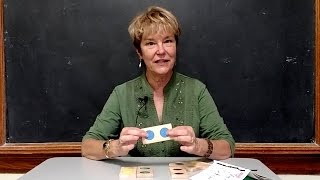A visual art lesson where the teacher engages the students by reading them a story on sharing then has the students do a crafts activity to help drive the point home. The teacher begins by reading the story the rainbow fish and asks the students to think about sharing and why it may be important. The students then make their own rainbow fish using a cut out of their hand and glue on scales made from other colored paper.
Read Transcript
Hi. My name is Bethany Keefer. I work at City Arts as a youth instructor. Trees for Life has approached us and asked for us to put together a lesson plan meant to show other teachers how to teach a certain age group. We’re going to be going over a lesson that’s meant for children ages four to ten. The lesson we’ve chosen today is to make a rainbow fish. This is based off the book “Rainbow Fish”, by Marcus Pfister. It’s a really good book that’s got a lot of morality to it. Basically, a quick summary of the book, rainbow fish that’s got beautiful scales that doesn’t want to share with his friends. A lot of the other fish don’t want to hang out with him because they think he’s mean. In the end, he decides to share scales with his friend, so he can have people to hang out with, and everybody’s happy in the end. The of moral this story is to share- if you choose not to share, you may not have any friends to be around you. So, we are going to do rainbow fish. With this, it’s important to discuss, teachers, with the students- ask them, engage them in the activity. Is there ever a time in their life where they had to choose between sharing or not to share? What was the outcome? We want to make sure we can relate the project back to them. I’m sure that I’ll have an example they can share. Okay, so to begin with the hand print, fish-puppet that we’re going to make the rainbow fish book, first off, we need to check our supplies. An assortment of colored construction paper, crayons, these little googly eyes you can use to make the eyes for your fish, Popsicle stick, scissors, Elmer’s glue, a pencil for tracing, and then also the teacher will use a hot glue gun to finish off the project. So, first we want to begin, we want to encourage the students to make a hand print. Have them spread their hands out, as well as they can, on the construction paper, and then begin tracing their hand. It’s best for them to do this themselves, if you need to help with assistance that’s fine. So, we’ll do a hand print, then you’ll have to finish in that side. And this is what it’s going to look like when you’re done, obviously there’s would be a lot smaller. So, we’ve got our fish, I want to encourage them to color on the fish. Be as creative as they’d like. They can do some swirly squiggles, use different colors, I want to encourage that they all do different fish, it’s okay for their fish to look different from their peers. So, add in some colors. Next what we’ll do is I have gone ahead and traced out some fins, some scales with a thicker piece of construction paper. I use that as a stencil for them. It probably would be too difficult for them to do this part themselves. So, this is how I stenciled it out for them, just by using this scale. But you would go ahead, as a teacher, and give them these to cut out and, also assist with that if they need help. So, they would use their scissors and cut out the scales the best they can, it doesn’t have to be perfect, just like that, and I’ve already got some scales that are pre-cut. So, we would go ahead and put some scales on the fish and use some of their Elmer’s glue. And we want to encourage students to do this. Use different colors, and in the book, they’ll learn about the rainbow fish with the different colored scales, but at the end of the book the fish doesn’t have as many glittery scales as the fish did in the beginning of the book, because they shared with their friends. So, they probably would only have one or two glitter scales on their fish. So, this is just an example of them starting to put those on. Next, we can put the eye on and they can color in fish lips. Whatever kind of shape they want to do, I just did a half moon. I’ll outline it, so you can see it better. They’re fish, they’ll finish by putting the rest of the scales on and, then we finish the project by using the hot glue gun. So, the teacher will put the hot glue on the Popsicle stick and then put it on the back of their fish-puppet. So that’s the start of what their fish puppet will look like. I think they will enjoy it, and that is the end of the lesson.






